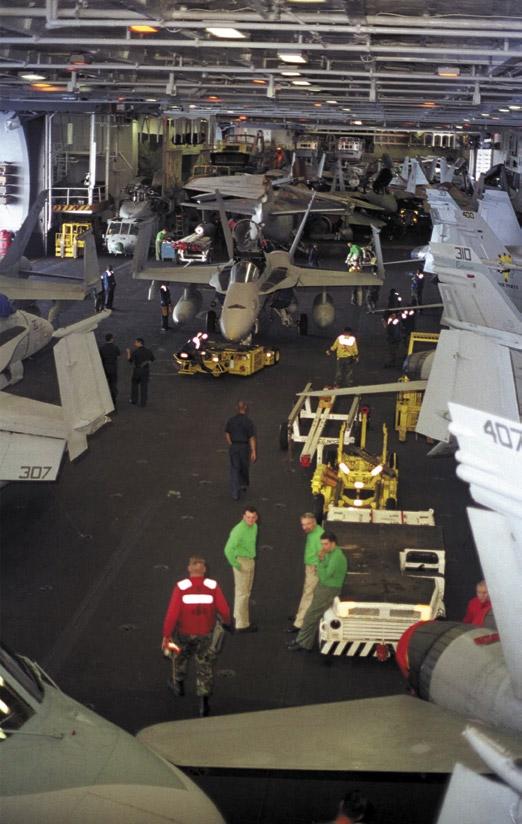
4 minute read
50 Gallons of Fuel and a Messy Cleanup
By AM2 Timothy Swanson, VFA-147
The day started slowly—the only workload consisted of changing a couple of latches and swapping a flap from one jet to another. It made for a quick and easy day at sea for any Hornet airframer. I sent half of my guys to fix the latches, and I took the other half with me to swap out the flaps in the hangar.
Advertisement
Once at the jet, we noticed the flap needing removal had been pushed up too far. My first thought was to get at the bolts from the top of the wing; however, the aircraft had been painted the previous night, and we were instructed not to work on top while the paint was drying. I decided I would have to use hydraulic power to extend the flaps in order to remove the attachment bolts. I walked up to maintenance control to let the maintenance chief know what was going on and what we planned to do. We were ready to get this seemingly simple task done.
I walked around the jet to make sure none of the movable surfaces would hit anything that might be in the way. The area looked clear; all the doors were up out of the way. We then connected the external electrical and hydraulic power, and I asked someone to jump into the cockpit and turn on power. I immediately was called over to the cockpit, expecting to hear the power wouldn’t hold for some reason. I climbed up to the cockpit and learned that one of the engine fire-warning lights was depressed, and the ready-discharge light was on. If the discharge light were to be pushed, it would cause the fire bottle to discharge—not a good thing. We secured power, and here is where the fun began.
To avoid accidental fire-bottle discharge, I reset the fire-warning light, which made the ready-discharge light go out. We finally were ready. I walked over to the wall power outlet, held the close-circuit button, and called to turn on the power. I walked back over to the aircraft and was instructing the “Jenny” operator when I noticed a massive column of fuel beginning to dump out the forward, port, engine-bay door. Keeping a calm head, I ordered the guy in the cockpit to secure power and to get someone from powerplants. I ran to place drip pans under the downpour of fuel. I then entered the port MLG wheel well, where there is a fuel-shutoff valve that might stop the waterfall of fuel that was beginning to draw some attention. The valve had the cannon plug disconnected, but it was too dark for me to see what position the manual lever was in. I began to panic.
50 Gallons of Fuel and a Messy Cleanup

Photo by PHAN David Laviolette
Whipping around, I demanded a flashlight, and the powerplant mechanic instructed me to reconnect the cannon plug. At the same time, in the cockpit, another powerplant mechanic turned on battery power and pushed the same fire-warning light I previously had reset. I heard a buzz and watched the shutoff switch move to the off position. I then disconnected the cannon plug, and the waterfall slowly began to decrease to a small trickle. Then came the clean up. Thanks to some fast reactions and some good luck no one was injured, and no equipment was lost as a result of this incident. There was, of course, the little matter of “fuel spill” being announced over the 1MC and the “Flying Squad” being called away.
What went wrong? There was a failure to follow established procedure when a fire-warning light was pressed and a failure to communicate. A warning sign wasn’t posted on the aircraft, and maintenance control didn’t mention any maintenance issues requiring special attention. The shop’s passdown also didn’t reflect any issues with the aircraft. According to 4790, each squadron will establish briefing procedures for seat checkouts. Part of our squadron’s seat-checkout training is “if you see a firelight pushed in, you are to notify maintenance immediately.” The seat-checkout program was put in place for my safety and the safety of my shipmates.
To correct the problem, our squadron held additional training on what to do when a fire-warning light is depressed. The training stressed how important it is to communicate with other work centers and maintenance control before applying power to any aircraft being worked on. When embarked, effective communication is more challenging because the squadron’s shops are spread out all over the ship.
Had I made it my business to be informed on the status of the jet and had I followed established procedures, this incident never would have occurred. You know what they say: The only stupid question is the one you don’t ask!










